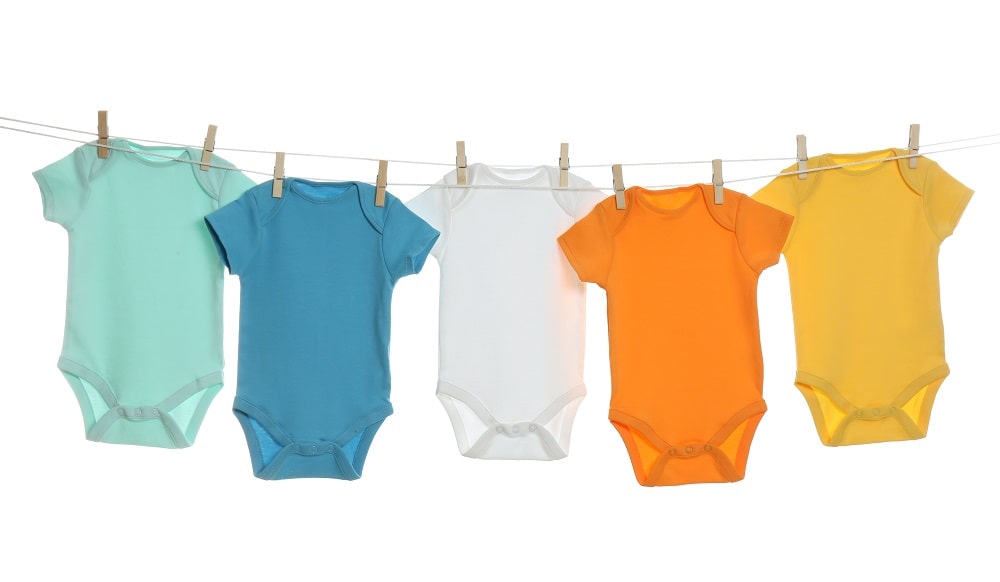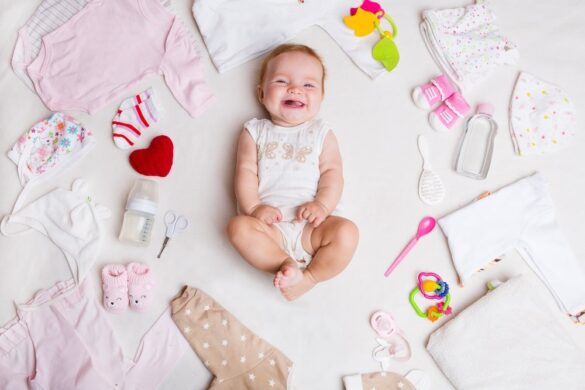Ideally, a baby’s clothes size is based on age. The clothes are categorized into three groups: Infant, babies, and toddlers. An infant is a baby between the ages of zero and six months old. On the other hand, baby sizes are intended for children aged six to twelve months, while clothes meant for toddlers will supposedly fit kids aged twelve months and over.
While this method may work, it’s not always accurate. Selecting appropriate clothes and onesies for your child can sometimes be more than just picking a size that matches their age. This is because, like adults, children come in different shapes and weights, too. For example, a piece of clothing labeled for a newborn may fit newborns differently. It may be the perfect size for one but smaller for the other.
When selecting your babies’ clothes, you could use all the help you can get. Here’re six tips to guide you in picking the right size for your baby’s clothes.
1. Consider The Weight and Height Of Your Baby
As aforementioned, basing your child’s clothes size solely on their age isn’t always accurate or reliable. That’s why you must factor in your child’s weight and height. This helps to cater to babies growing at different rates and having different shapes and sizes even while in the same age group.
After birth, most parents know their babies’ height. However, it’s quite hard to keep track of their height. Therefore, you can use a baby clothes’ size chart to simplify it. Different brands have different size charts. Therefore, when purchasing your child’s clothes, be sure to ask for a chart to help you make accurate references.
2. Try Out As Many Brands As Possible
Since different brands have different size discrepancies for clothes falling into the same size group, you may want to sample as many brands as possible before settling on one that serves you best.
While one brand could have the best t-shirts fit for your baby, another could have the best shorts. Therefore, sampling different brands and identifying which one offers the sizing that matches or is in sync with your baby’s growth pace may help reduce the stress of choosing clothes that don’t fit.
Once you have established a brand, moving up the age scale becomes simpler, too.
3. Go For Clothes One Size Ahead Of Your Baby’s Real Age

In most cases, babies grow rapidly. And this is a reality older parents would know.
In the first month only, an infant grows by about one and a half-inch in height, and this continues with age. As such, they often outgrow their newborn baby clothes fast, which might force you to buy clothes unnecessarily.
If you happen to be at the baby clothes shop every month, the trick is to buy clothes at least one size ahead of your baby’s actual age.
The shoes can be a little tricky to shop for. Kids’ feet grow fast, so the shoes you buy now will likely no longer fit them after a couple of months or a year. Still, proper footwear is important for your baby. Shoes keep their little feet protected and warm. Some occasions may require a dress code, and shoes are necessary to complete the look. That said, consider purchasing a pair of stylish soft bottom baby shoes to keep their feet protected and comfortable and match the outfit.
4. Shop In Person
Today, everyone wants to tick off their to-do list from the comfort of their home: even shopping for food and clothes. However, shopping for baby clothes online is tricky. Not only do you risk purchasing the wrong size, but you might also purchase one whose fabric may potentially cause an allergic reaction to your child’s skin.
Some parents may ask, ‘What if I know my child’s size and I have a chart?’ Unfortunately, tags on clothes aren’t always accurate, as discussed above. That is why it’s crucial that you visit the shop in person. This helps you eyeball the clothes and determine if it’s the best fit for your child. It also lets you feel the fabric to determine if it’ll serve its intended purpose.
If you could go to the shop with your child, it would be even better. However, this is only possible for children at least two years and above. Then, you can try on the clothes to see if they fit for the months to come.
5. Consider The Material Of The Clothes
Fabrics expand due to consistent laundry. While this is a normal occurrence, different types of materials expand at different rates while, at the same time, some fabrics shrink. Therefore, when selecting your baby’s clothes, keep in mind how soon they’ll expand or shrink.
For example, pajamas made from cotton tend to shrink. You, therefore, should buy one size up for all their sleepwear and other clothes made of cotton.
7. Look Out For Signs of Discomfort From Your Child
One way you can tell that your baby has outgrown a piece of cloth is by them exhibiting discomfort. Therefore, it’s important that you watch your baby and look out for the following signs that may suggest the clothes are too small:
- Rashes and irritation on the baby’s skin
- Your baby has digestive issues
- Your baby is unhappy, and they constantly cry and are fussy when you’re helping them wear the clothes
- Shirts roll up on the baby’s belly
- The buttons on the onesies snap open
- Clothes cut blood circulation
Buy The Right Clothes Size
Your baby’s mood is highly reliant on how comfortable their clothes feel. Therefore, it’s essential that you start purchasing the right size of clothes for them even at a young age. Although you may find dresses that are aesthetically pleasing, always prioritize quality and comfort. This way, you won’t have to deal with a cranky and fussy baby all day.
So, if you are shopping for baby clothes soon, keeps the above tips in mind.

